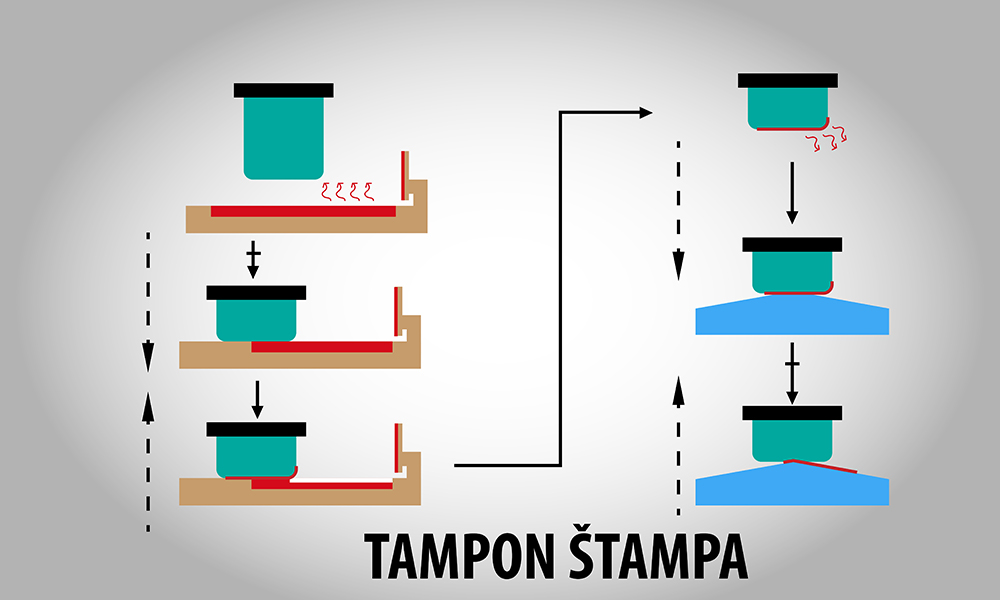
We assume that everyone had the opportunity to see pendants on which something printed or to receive certain promotional material in the form of promotional pens, lighters, ashtrays and similar items, and also we assume that not so many people know that this is done by the so-called pad printing.
It is a special printing technique which belongs to so-called deep printing, and it means that a special pad, made of rubber or silicone, from a cliché, that is, specific printing form, transfers color to a particular object.
It is interesting to note that pad printing is primarily used when certain logos or texts, pictures and the like should be printed on those objects and surfaces that are curved, regardless of the material that they are made of. Typically, pad printing is used for printing on ceramic and glass, or plastic, but also metal and rubber items. In general, this type of printing is most often used in the production of advertising material, and it is also considered one of the best options since it can be easily adapted to different surfaces, especially those in which other printing techniques cannot produce valid results.
This way of printing is considered revolutionary since it makes it possible to leave a print on the surfaces where this was almost unthinkable before. It is quite logical that if an item is flat, it certainly implies that printing is also significantly simplified, and then there is no need to use pad printing.
As the marketing area continues to progress, there is an increasing number of objects on which it is possible to print a logo or a message for clients, so pad printing, except for pendants, pens, and lighters, is very often used when printing something on glasses or watches, as well as diaries and ashtrays, but also on special crystals and on other types of materials which are used lately.
The advantages of this type of printing are numerous, topped by the one that implies the ability to print on surfaces that are curved, but also on materials of different types. Also, the mentioned type of printing is excellent, first of all, in terms of precision and quality of the print, and can certainly be applied to larger, but also to medium circulations.
In addition to being used for printing advertising material, pad printing is also present in the field of electronic (on computers, keyboards, mice and other items), but also in the automotive industry, then in the production of sports equipment, even in the production of medical equipment and toys, as well as in many other segments.
It is interesting to emphasize that a particular logo or some other image is actually transferred to the desired object, which can be made various materials, through the cliché which is flat. And the shape to which it is transferred can be even the one that contains complex angles, that is, cylindrical or round, or any other uneven form. The use of pad printing is increasing, and it is not an expensive service. Color applying in this printing technique implies both an open and a closed color system, and usually, two types of machines are used for pad printing, those that include a rotary tape, as well as those that involve the need to move special tapes so that printing can be implemented. Depending on the circulation, it is defined whether a closed or open color system will be applied, taking into account that the closed is primarily intended for medium and large circulations, and is, therefore, more often used than the open one, which is primarily intended for making smaller circulations. As far as the prices of pad printing are concerned, they naturally vary primarily in relation to the circulation, but the price is defined also in accordance with a certain image or text that needs to be printed, and it must also be defined how much it costs to make the cliché so that the price could be determined.